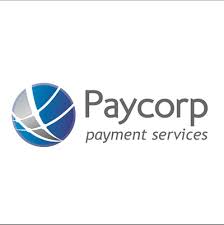The South African Reserve Bank (SARB) is pursuing reforms that could transform how money moves in the country. As Bloomberg reported, by 2026, non-bank financial service providers may be granted direct access to the National Payments System (NPS), breaking the long-standing monopoly of commercial banks.
This initiative, part of the SARB’s Vision 2025 strategy, is designed to “enhance competition, efficiency, innovation and financial inclusion,” according to the central bank.
If successful, it could reshape South Africa’s financial sector by widening participation in the infrastructure that underpins every digital transaction.
Non-banks still tied to banks under new shift
Non-bank platforms such as Payfast, SnapScan, Yoco, MTN’s MoMo, and Vodacom’s VodaPay must partner with banks to clear and settle payments.
This dependency has kept transaction costs high and limited the speed of innovation. The proposed reform would change that by creating a new licensing framework for payment institutions, modelled after the European Union’s PSD2 rules.
Under draft regulations published in March 2025, non-banks offering services such as money transfers, e-money issuance, merchant acquiring, and participation in fast-payment systems like PayShap will no longer be classified as conducting a bank’s business.
Instead, they will apply for dedicated licences, giving them direct access to settlement rails.
The SARB is taking a cautious approach. Public consultations on the rules closed in April 2025, and final regulations are expected in the year’s third quarter.
If all goes according to plan, the first licences could be issued in early 2026. For fintech startups and mobile money providers, this means lower barriers to entry and the opportunity to compete on fairer terms with established banks.
While the move promises greater competition, the central bank is clear about the risks. Licensees will face strict requirements, including capital adequacy standards, segregation of client funds, and liquidity buffers.
They will also need to comply with anti-money laundering and counter-terrorism financing rules.
The SARB insists these measures are necessary to protect the financial system. As the bank notes in its mandate:
“The South African Reserve Bank’s primary object is to protect the currency’s value in the interest of balanced and sustainable economic growth.”
This responsibility ensures that payment systems remain secure, reliable, and resilient against systemic risks.
About the South African Reserve Bank
The SARB is South Africa’s central bank, constitutionally mandated to safeguard the rand’s value and maintain financial stability.
Beyond monetary policy, it is pivotal in regulating financial institutions, managing foreign reserves, and overseeing the national payment system.
As the operator of the South African Multiple Option Settlement (SAMOS) system and the real-time gross settlement (RTGS) platform for the SADC region, the bank acts as the ultimate settlement agent for interbank transactions.
It ensures that “all transactions that South Africans make are safe, efficient, and settled in the SAMOS system.”
The SARB’s Vision 2025 strategy lays out its long-term roadmap for building a modern, inclusive, world-class payment system.
It emphasises collaboration between regulators, banks, fintechs, and consumers to promote transparency, accessibility, and trust in digital payments.
















